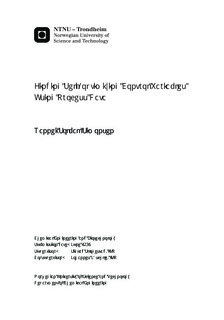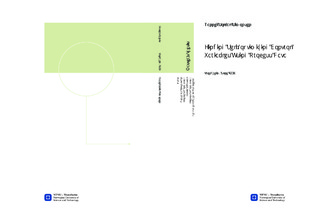| dc.description.abstract | In this project we have studied a newly developed way to find self-optimizing variables. The method studied in this thesis uses data measurements, y, to fit a quadratic cost function. By using parameters found in the cost function modeling we can identify a combination matrix H. The H-matrix gives a linear combination of measurement, c=Hy, which can be used in a feedback control structure. The control variable, c, is said to be self-optimizing when, kept at a constant set-point, the operation of the process is close to optimal operation even when it is exposed to disturbances. Self-optimizing control structures are beneficial because they remove the need for re-optimization of a process after disturbances occur. The data-based method uses only historical measurements and the easily obtainable measurement gain. It does not require extensive knowledge found from complicated experiments or a well defined description of the process such as a process model. This is a great advantage with this method compared to more established methods such as the exact local and null space method.
The data-based method for finding self-optimizing variables is a rather newly developed method, and little was therefore known before. This thesis present preliminary research on different aspects of the data-based method. In order to investigate the method we applied it to three different test cases: a dummy case, an evaporator process and a CSTR and distillation column connected with a recycle process. Through research of the method using these test cases, we found some indicative trends regarding factors affecting the modeling of the cost function and estimation of the H-matrix. Additionally, we found that this method can in some cases be a good alternative to for example the exact local method. However more research is needed to be able to understand the factors affecting the outcome from the data-based method.
We hope that the work presented here will inspire to future research on this promising method to find self-optimizing variables. | |

